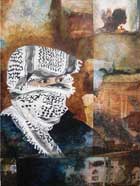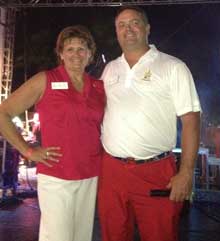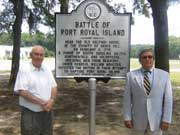 Historically, the carnage of war can give birth to great art. Walt Whitman’s sensibilities were shaped by the destruction of the Civil War and the experience of caring for his wounded sibling. Ernest Hemingway’s tone, which permeated not only “A Farewell to Arms” but his later works as well, was molded on the front lines of WWI where he served as an ambulance driver. And WWII produced not only Norman Mailer, but Joseph Heller, Kurt Vonnegut and Herman Wouk. But unless you consider the YouTube remake of Lady Gaga’s “Telephone” that was made by a squad of paratroopers in Afghanistan (http://voices.washingtonpost.com/federal-eye/2010/04/soldiers_go_gaga_in_afghanista.html) and has since gone viral on the internet, high art, there has been a decided lack of artistic material that has been produced by veterans since 9/11.
Historically, the carnage of war can give birth to great art. Walt Whitman’s sensibilities were shaped by the destruction of the Civil War and the experience of caring for his wounded sibling. Ernest Hemingway’s tone, which permeated not only “A Farewell to Arms” but his later works as well, was molded on the front lines of WWI where he served as an ambulance driver. And WWII produced not only Norman Mailer, but Joseph Heller, Kurt Vonnegut and Herman Wouk. But unless you consider the YouTube remake of Lady Gaga’s “Telephone” that was made by a squad of paratroopers in Afghanistan (http://voices.washingtonpost.com/federal-eye/2010/04/soldiers_go_gaga_in_afghanista.html) and has since gone viral on the internet, high art, there has been a decided lack of artistic material that has been produced by veterans since 9/11.
Part of the issue is time. Particularly in literature, it seems to take at least ten years for artists to fully process their battlefield experience into something that can be consumed by a broad audience. Part of the issue is the audience. With the advent of the internet and cellular phones, modern consumers have been trained to expect the information they want instantaneously and deliverable in a 30 second package or less. And part of the issue is the potential artist pool to draw from. Where as roughly 12% of the population served in uniform during WWII, today less than 0.5% of the nations population has served in the Global War on Terror. Still, while the numbers serving may be smaller, virtually every soldier or Marine in theater today carries a digital camera or has set up his or her own blog. From the individual soldier’s perspective, this is the most documented war in history. It’s from the digital medium that I predict the defining art of this war will eventually come.
In Beaufort we are blessed. It’s a small town, but one with a vibrant community for and appreciation of the arts. It’s here, as part of Main Street Beaufort’s 16th annual Shrimp Festival in October, that we are hoping to highlight one artistic chapter that is unique to this war. Unlike any previous conflict this nation has fought, 16% of those who are serving are female. Many of the women warriors face the same dangers and confront the same battlefield challenges as their male counterparts. This is something completely new, and it is something of which the long-term ramifications are unknown. Artistic expression, I believe, can serve as a looking glass into the future of what to expect.
With the exhibit “Battle Dress,” which will premiere in Beaufort, we are hoping to provide that window. The exhibit’s curator, Laura Sellinger, herself a wounded veteran of Iraq, sums it up best. “Art has given me a means to communicate what I was otherwise incapable of communicating. For us, (females) it is different. We go off to war but we are still expected to be someones’ wife, sibling or daddy’s little girl. It’s an enormous burden.”
The exhibit, a work in progress, consists of photos, paintings, poetry and prose. Some of the works hit the viewer with the full impact of an artistic IED. Paintings, such as Kristy Hermann’s acrylic collage pictured here, ambush your senses in a manner that does not want to let you go. I’ve seen veterans view her work and move on, only to return several minutes later for a second, third or even a fourth look. I’m no art critic, but if something has that kind of effect on a viewer, I’d judge that to be good art.
Battle Dress will be on display at the Charles Street Gallery from 23 September until 7 October. We invite you to come and judge it for yourself.
Look for more information about Battle Dress and The Independence Fune in future issues of Lowcountry Weekly.







